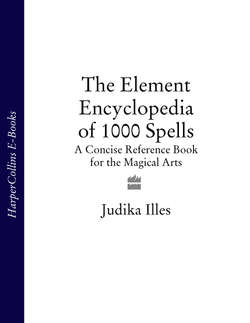Читать книгу The Element Encyclopedia of 1000 Spells: A Concise Reference Book for the Magical Arts - Judika Illes - Страница 80
Orisha and Lwa
ОглавлениеThese very similar spirit beings emanate from West Africa. The orisha derive from Yorubaland, part of modern Nigeria. The lwa derive from Fon traditions in Dahomey/Benin. “Vodou” means “spirit” in the Fon language.
Adored in their homelands for thousands of years, these spirits accompanied their enslaved devotees to the West. Traditional African religions were outlawed under slavery, devotees were persecuted, and the spirits were driven underground, but they were not forgotten. Instead they emerged in great prominence in the latter part of the twentieth century as the foundation of increasingly prominent and influential African-derived spiritual traditions.
The orisha are the presiding spirits of the Santeria religion as well as the Afro-Brazilian cults, such as Candomble, Umbanda, and Quimbanda. The Portuguese spelling is orixa; many of the same spirits are prominent among the different cults. Their names may be spelled differently, sometimes the same spirits use different names, their personalities may even manifest slightly differently depending upon location, but underneath their basic nature remains the same. For instance Oya, spirit of storm winds and the Niger River retains that name in Cuba but is known as Iansa in Brazil. Her mythology and basic personality remain the same.
The lwa are the presiding spirits of Haitian Vodou as well as its descendants, New Orleans Voodoo and Dominican Vodo. (Lwa is the modern Kreyol spelling; older French texts may use the term loa.) Although there is an entirely different pantheon of spirits, a few are common to both traditions and the behavior and manifestations of orisha and lwa are similar.
The influence of a few spirits was particularly well distributed in Africa and thus they are common to virtually all African Diaspora traditions. This refers particularly to the trickster Master of the Crossroads, Eshu-Elegbara, and Ogun, spirit and embodiment of iron. Although their names may vary depending upon location—particularly that of Eshu who, by nature, enjoys tricks, illusion, and confusion—their core essence remains consistent.
Conventional wisdom has it that there are thousands of orisha, but only approximately forty have any interest or dealings with people. These forty, however, are passionately interested and involved with humans.
The official, formal African-derived religions, Santeria and Vodou in particular, continue to expand, attracting new devotees. The orisha and lwa, in addition, are gregarious powers. They’re eager to work, eager for attention. Because they are constantly fed, they’re full of energy. They will also work with independent practitioners and have been assimilated into some Wiccan, Pagan, and Goddess traditions. However, ritual possession, the spirit’s use of a person as a medium, common to a vast number of traditions worldwide, only occurs in the formal, official setting, as it should. These are extremely powerful, potentially dangerous practices that should not be attempted by the novice, the unsupervised, or the unitiated. Ritual possession is a shamanic art, not a magic spell.
There is a formal, lucid, structured way of working with the orisha and lwa, which serves as an excellent model for any spiritual interaction. Vodou and Santeria are monotheistic faiths: there is a supreme deity who created all of existence. This creator, however, prefers to be an overseer. Olodumare, the Yoruba equivalent of God, created the orisha spirits to supervise creation. Each orisha or lwa is responsible for certain departments of life. Conversely every area of life has its own presiding orisha or lwa. Each individual person also has presiding orisha or lwa, typically a male and a female, the “masters of your head.” They are your patrons, protectors, and advocates—providing you don’t anger them too much.
Each orisha and lwa has a distinct personality. Each has a color, number, special foods, plants, and objects in which they recognize themselves. Attract their attention by manipulating these things: thus spells invoking the power of Oshun, Spirit of Love and Beauty, inevitably draw upon the color yellow, the number five, water, cinnamon, and honey, all of which share Oshun’s essence. Petitions to Oya draw upon the color purple and the number nine. The spirits will communicate with you with these colors, numbers, and items as well. In general, when spirits perform a service for you, they want the credit. They will attempt to let you know that they have accomplished the miracle or the magic as the case may be. This system may be used to effectively communicate with spirits of other pantheons as well.
The orisha most involved in human every-day matters are sometimes invoked as a group and known as the Seven African Powers:
1 Elegba
2 Ogun
3 Obatala
4 Oshun
5 Either Oya or Orunmila, depending on individual tradition
6 Chango
7 Yemaya
By petitioning the orisha as a group, you may rest assured that all your bases are covered. The Seven African Powers provide all of Earth’s potential blessings and protections. Commercially manufactured Seven African Powers products frequently depict them in their guise as Roman Catholic saints (see Identification/Syncretism, pages 90–3).
